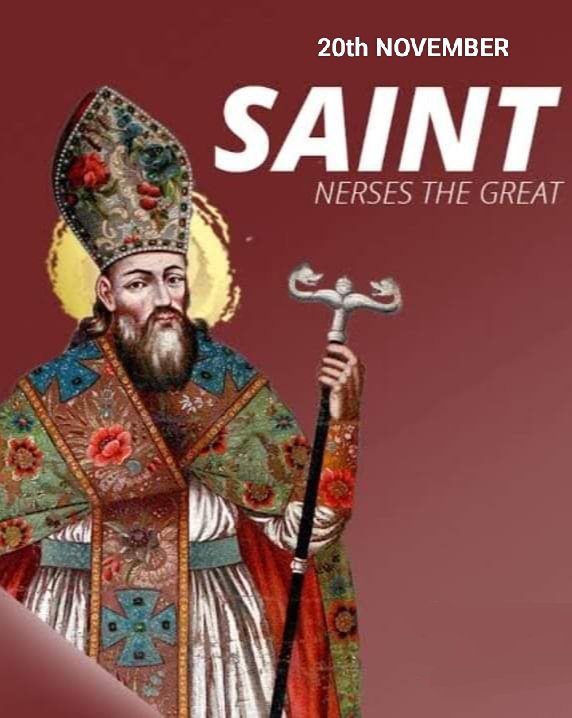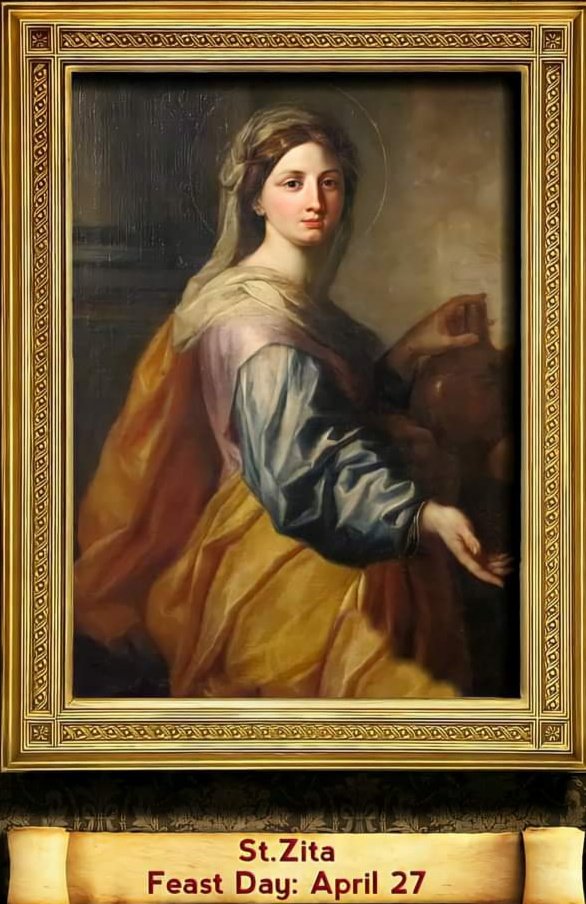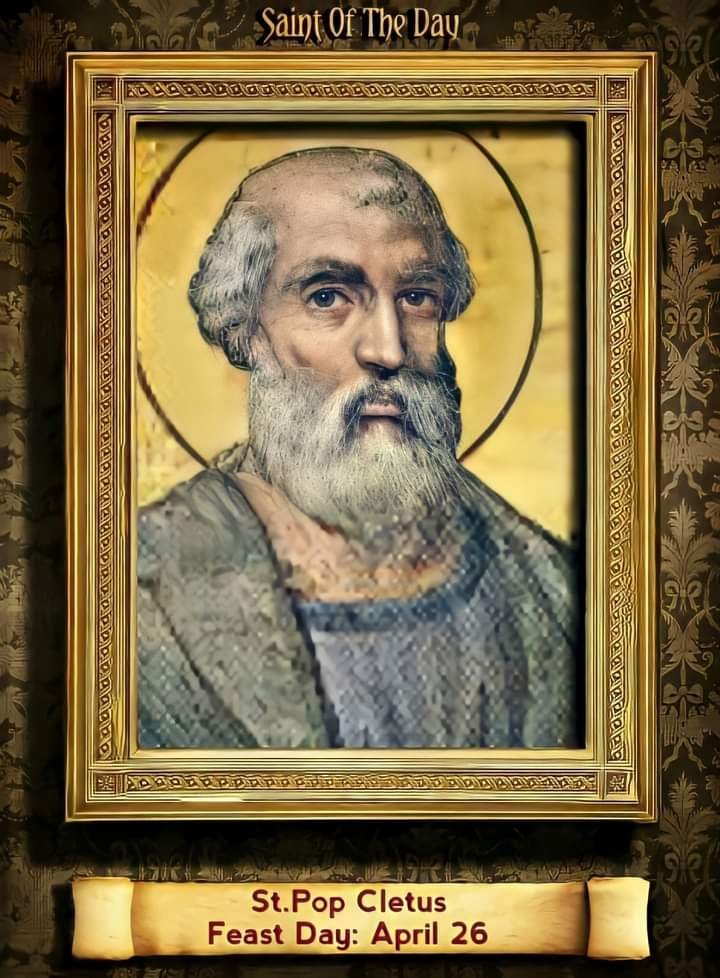FEAST OF SAINT NERSES THE GREAT
FEAST DAY – 19th NOVEMBER
Nerses I the Great was an Armenian Catholicos (or Patriarch) who lived in the fourth century. He was the son of At’anagenes and his mother was the Arsacid Princess Bambish, a sister of King Tigranes VII and a daughter of King Khosrov III. His paternal grandfather was St. Husik I whose paternal grandfather was Saint Gregory the Illuminator.
St. Nerses the Great was educated at Cappadocia. He married a princess called Sanducht, of the Mamikonian family. He was a Bishop and martyr. A native of Armenia, he studied in Cappadocia and wed the princess who gave birth to Isaac. After the death of his wife, he was appointed sword-bearer to Arsacid king Arsaces II (Arshak II). A few years later, having entered the ecclesiastical state, he was elected Catholicos in 353.
His patriarchate marks a new era in Armenian history. Until that point, the Church had been more or less identified with the royal family and the nobles. Nerses brought it into closer connection with the people. At the Council of Ashtishat he promulgated numerous laws on marriage, fast days, and divine worship. He built schools and hospitals, and sent monks throughout the land to preach the Gospel.
Nerses held a synod at Ashtishat that, among other things, forbade people to marry their first cousin and forbade mutilation and other extreme actions in mourning. Some of these reforms drew upon him the king’s displeasure, and he was exiled. During the latter part of Arshak’s reign Nerses went to Constantinople to ensure the emperor’s support of Armenia against the Persians. According to historian Faustus of Byzantium, Roman emperor Valens became outraged at Nerses condemning his following of the teachings of Arius and sent Nerses into exile.
While Nerses was in exile in Xad, he was the leader of the church in Armenia. Upon the accession of pro-Arian king Papas (Pap) in 369, Nerses returned to his See. Nerses devoted his efforts to reforming the Armenian Church, including convening a synod in 365 based on the principles he had studied under St. Basil at Caesarea.
Though he had established hospitals and monasteries, his reforms and denunciation of King Arshak’s murder of the queen led to his exile. He returned after Arshak’s death in battle, but relations were not much better with the new Armenian ruler, Pap, whose dissolute lifestyle caused Nerses to refuse him admission into church. Nerses was invited to a royal banquet at Khakh, on the Euphrates River, and was assassinated by poison.
PRAYER
Almighty God, you appointed Saint Nerses, to be a martyr, a faithful and fervent follower of your laws, fearless in carrying out his Christian duties. In the face of persecution and exile, he stood strong to his principals and sent the servants of God and of the Church on missions to spread your Holy Word.
Assist all of us to adhere to the faith, especially in tough situations, knowing that we have a righteous and invincible God standing with us and we will be victorious, in Jesus’ Name. Amen
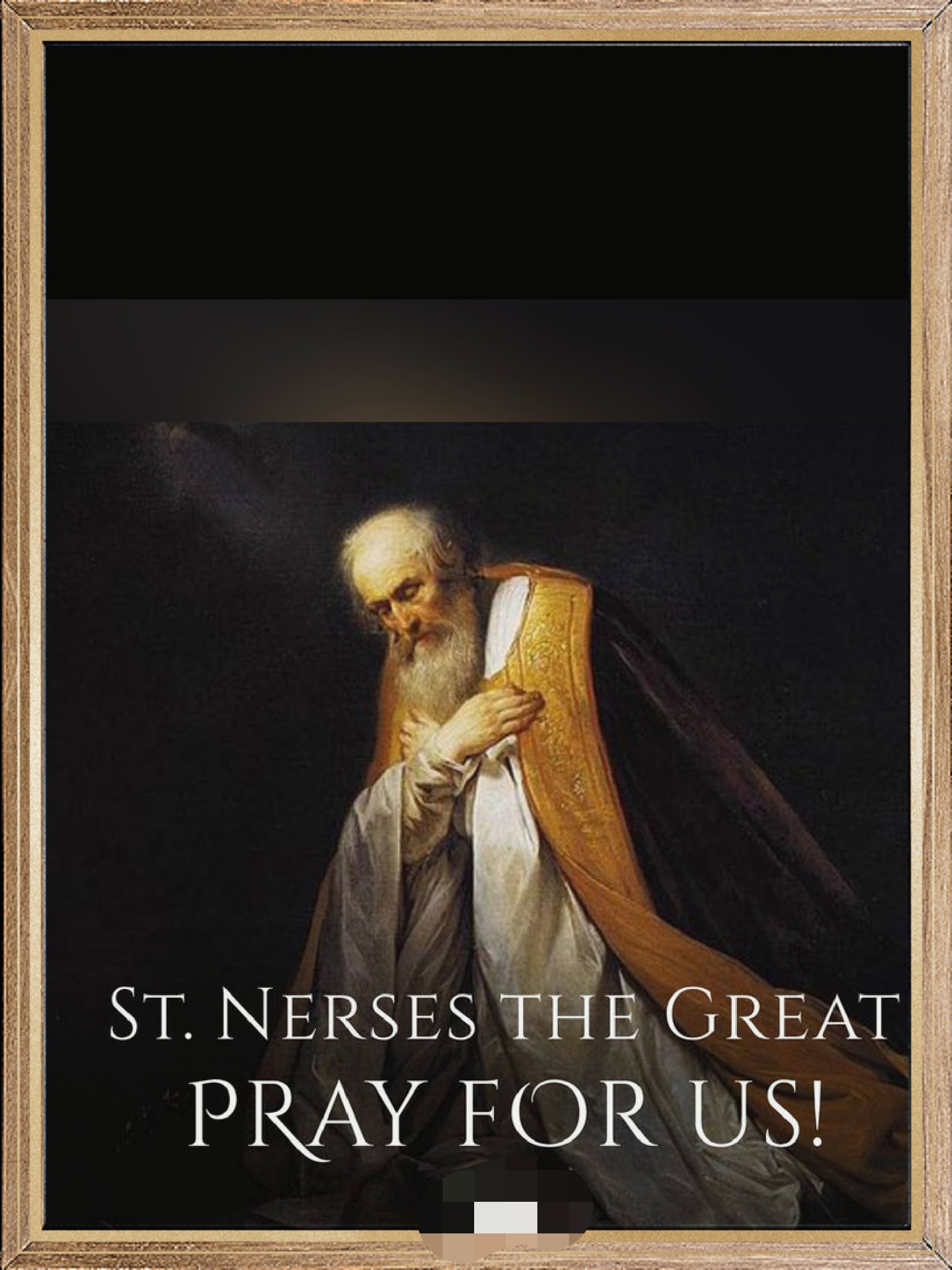
Saint Nerses the Great, pray for us all.
==================================
ALSO CELEBRATED:
SAINT MECHTILDE OR MATILDA OF HELFTA / HACKEBORN
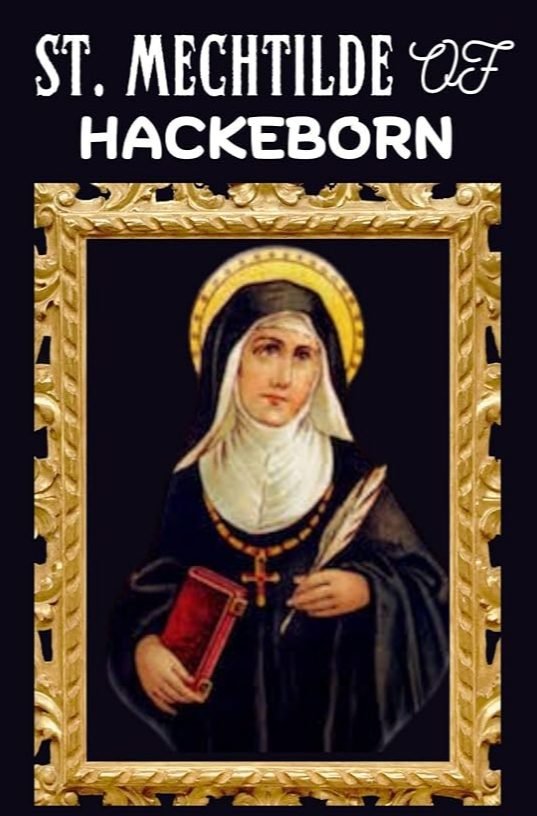
Mechtilde of Hackeborn, OSB, also known as Mechtilde of Helfta (1240/1241 – 19 November 1298), was a Saxon Christian saint (from what is now Germany) and a Benedictine nun. She was famous for her musical talents, gifted with a beautiful voice. At the age of 50, Mechtilde went through a grave spiritual crisis, as well as physical suffering. In the modern Benedictine calendar, her feast is celebrated on the anniversary of her death, November 19. She died in the convent of Helfta, near Eisleben.
Born Matilda von Hackeborn-Wippra, in 1240 or 1241, she belonged to one of the noblest and most powerful Thuringian families; her sister was the illustrious Abbess Gertrude of Hackeborn. The family of Hackeborn belonged to a dynasty of Barons in Thuringia who were related to the Hohenstaufen family and had possessions in northern Thuringia and in the Harz Mountains. Some writers have considered that Mechtilde von Hackeborn and Mechtilde von Wippra were two distinct persons, but, as the Barons of Hackeborn were also Lords of Wippra, it was customary for members of that family to take their name indifferently from either, or both of these estates.
Mechtilde considered so fragile at birth, that the attendants, fearing she might die unbaptized, hurried her off to the priest who was preparing to say Mass. He was reported as a person of “great sanctity,” and after baptizing the child, is reported to have said “What do you fear? This child most certainly will not die, but she will become a saintly religious in whom God will work many wonders, and she will end her days in a good old age”.
Mechthild was famous for her musical talents and beautiful voice, earning her the title of the “Nightingale of Helfta”; she reported that Christ called her his “nightingale” in her visions.[1] She held the office of domina cantrix until her death, presiding over the sacred music in her convent and training the choir.
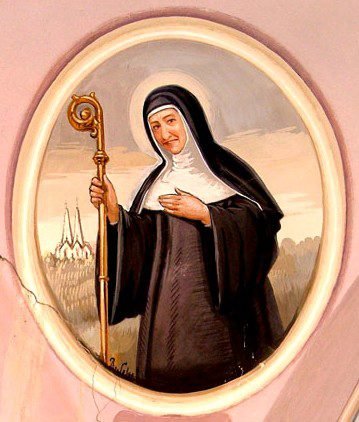
She was said to never tire in divine praise, despite experiencing severe physical suffering. Both troubled people and learned Dominicans consulted her for spiritual advice.
There is a gilded wooden statue of Mechtilde of Hackborn at the side chapel dedicated to St. Scholastica in the Benedictine Abbey church at Tyniec, Poland. Dressed in a monastic habit, she wears a cross indicating that she is an abbess.
It is known that once when St. Mechtilde had committed some slight fault, Our Lady showed herself to the Saint with a stern face and threatened her with a “golden whip”, lest the nun repeat her fault. However, the Saint was given to understand that the gold of the whip symbolized Mary’s kindness and love. In this connection also, Mechtilde once heard Jesus say to Mary: “Remember; My beloved Mother; that for thy sake I am indulgent to sinners, and I regard my elect (Mechtilde) as if she had served thee all her life with devotion.” Whereupon Mary lovingly gave herself entirely to the Saint, for Jesus’ sake.
During Mass on the Feast of the Assumption, Saint Mechtilde had the following vision: she beheld the Blessed Virgin Mary extending her mantle as if to receive beneath its shelter all those who fled to her patronage. Then the holy Angels brought and presented to her, as fair young virgins to their mother, all who had prepared themselves very fervently for this Feast, meanwhile protecting them from evil spirits and inciting them to good deeds. Then there appeared a number of little animals, representing sinners who devoutly pray to Mary; and she received them with great charity and covered them too with her mantle. At the Elevation, Our Divine Lord Himself blessed all who assisted at Holy Mass with special devotion toward His Mother in her glorious Assumption, so that they were strengthened in their good desires.
When St. Mechtilde was dying, she prayed very earnestly to Mary for the nuns of her Community, and the Blessed Virgin took the Saint’s hand in hers, indicating that she accepted from her the charge of the convent. Then Our Lord placed on Mechtilde a necklace of marvelous beauty, sparkling like gems, representing the glory of eternity in His Heavenly Kingdom.
Her Feast day is celebrated on November 19th.
(Excerpts based on an account by Raphael Brown)
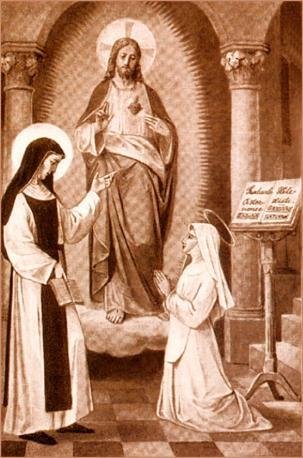
PRAYER:
O God, who called your handmaid blessed Mechtilde to seek you before all else, grant that, serving you, through her example and intercession, with a pure and humble heart, we may come at last to your eternal glory.
Through Christ our Lord! Amen
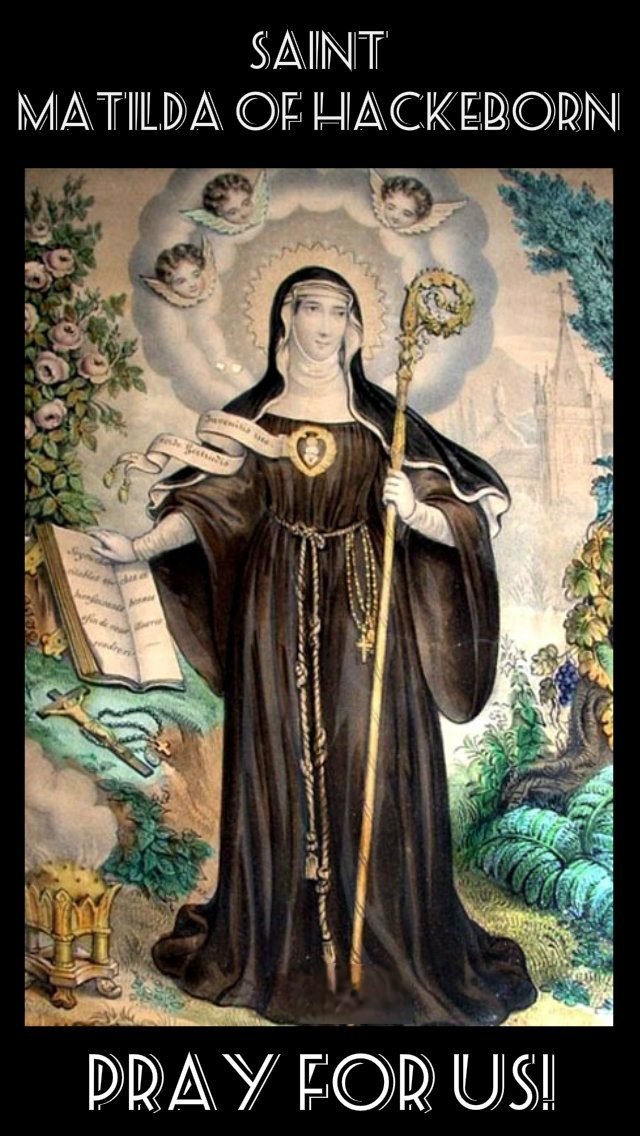
Saint Mechtilde of Hackeborn, pray for us.

